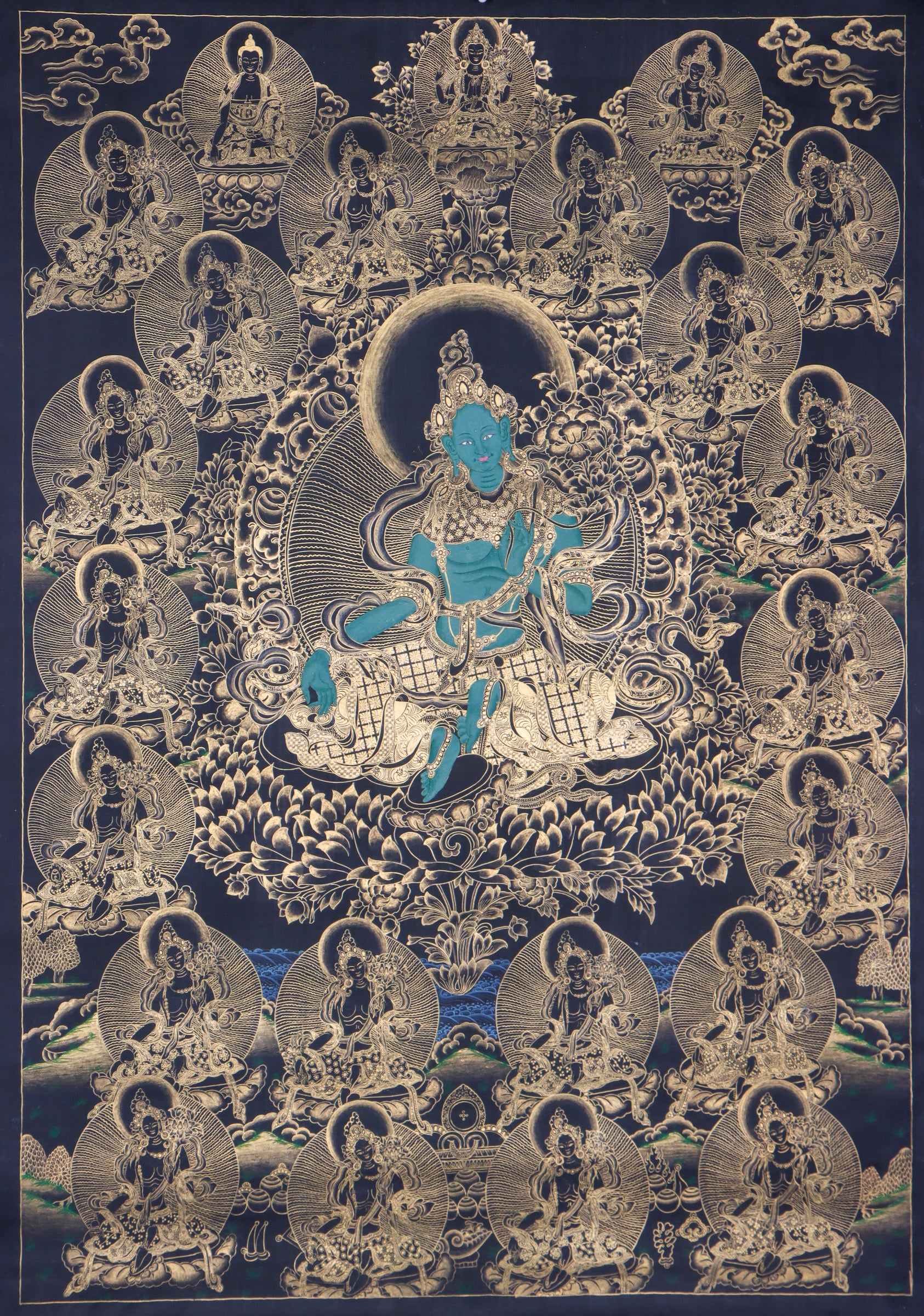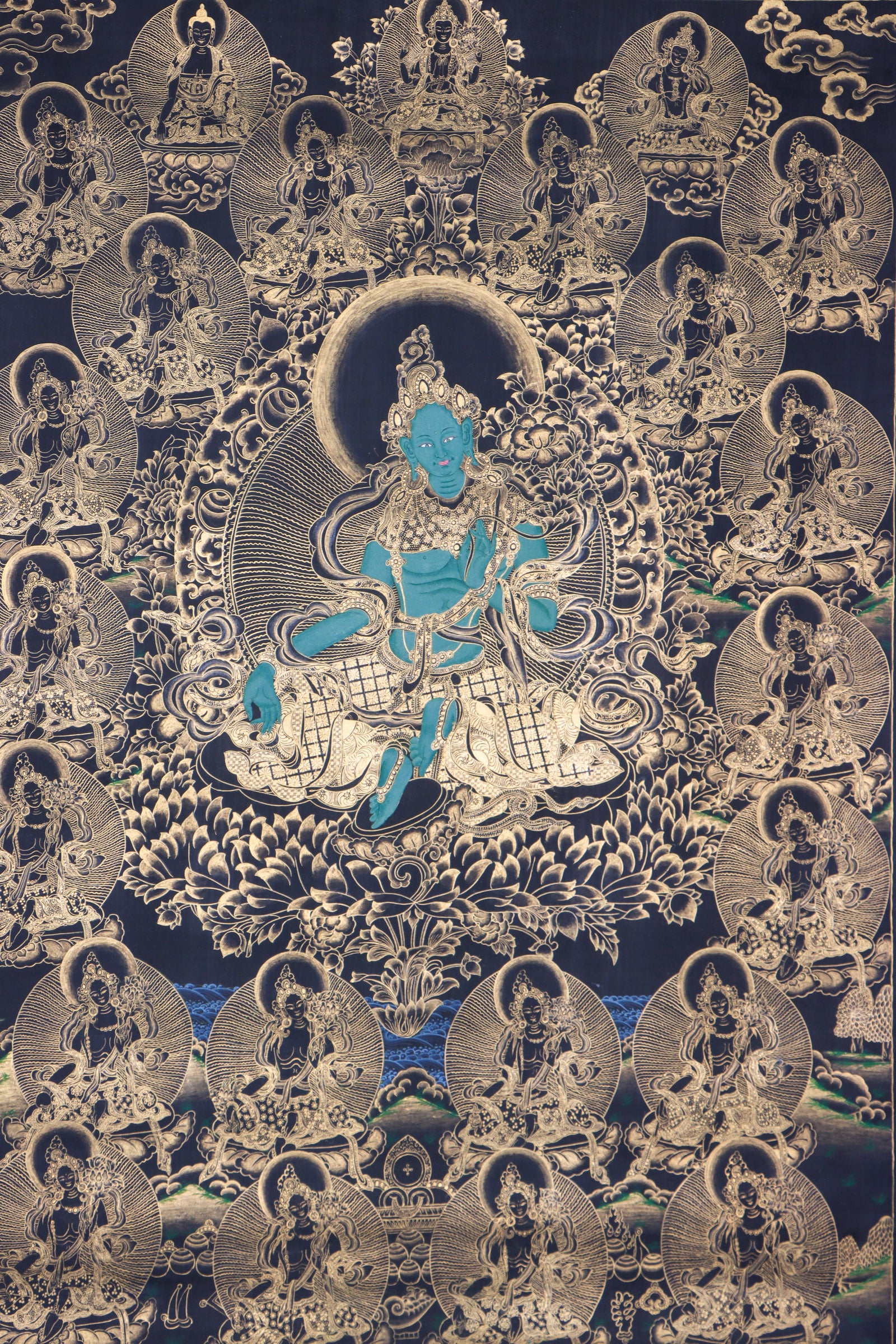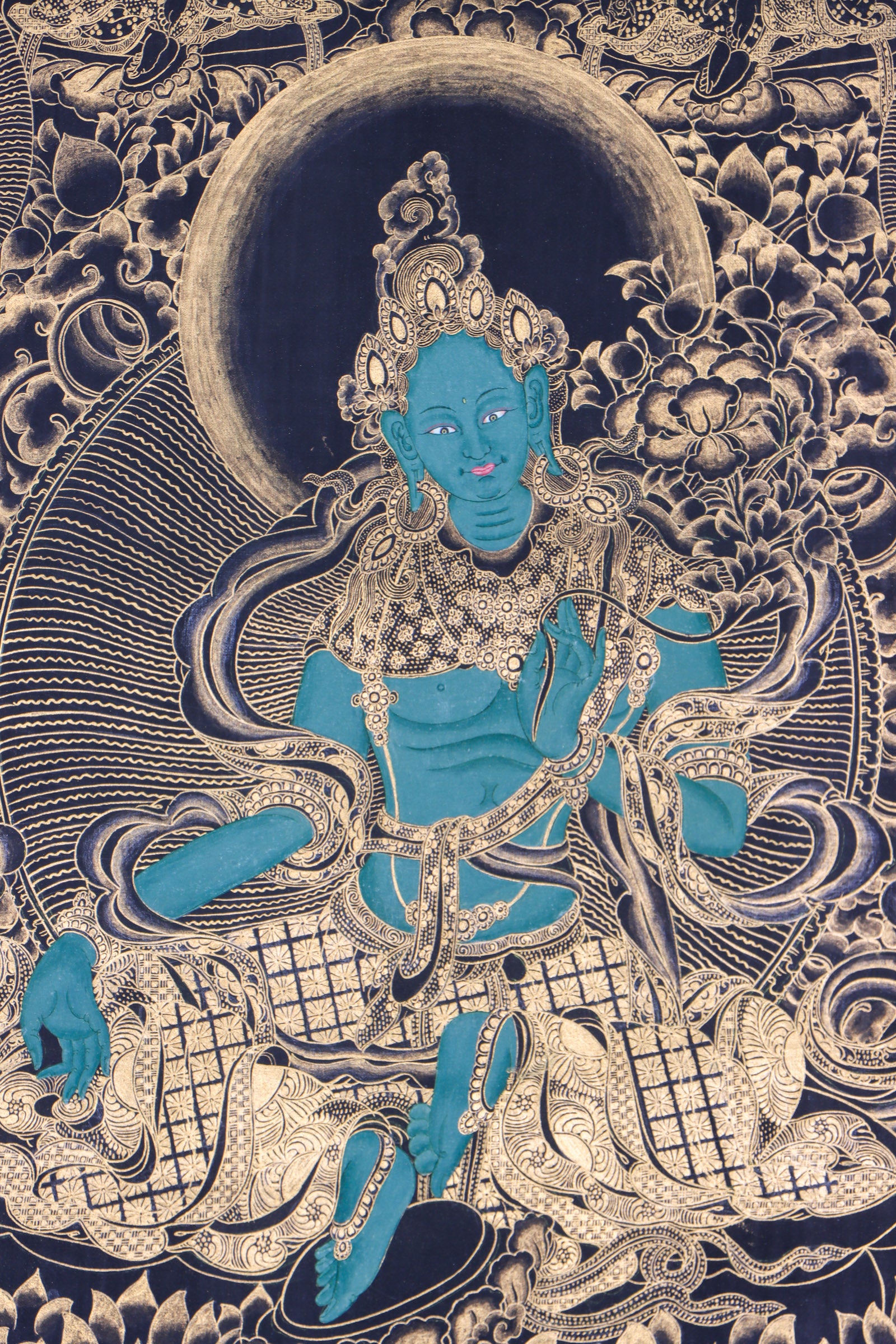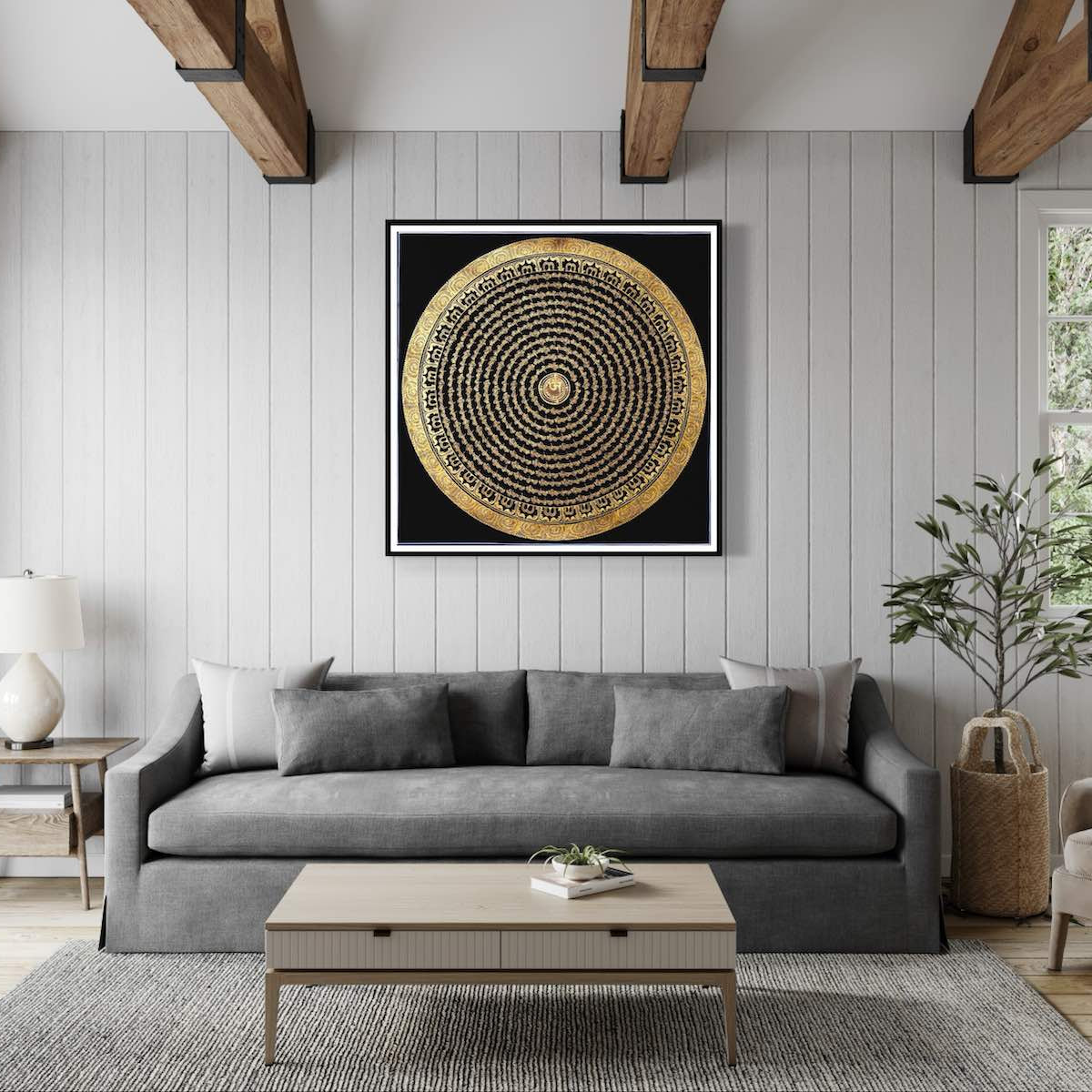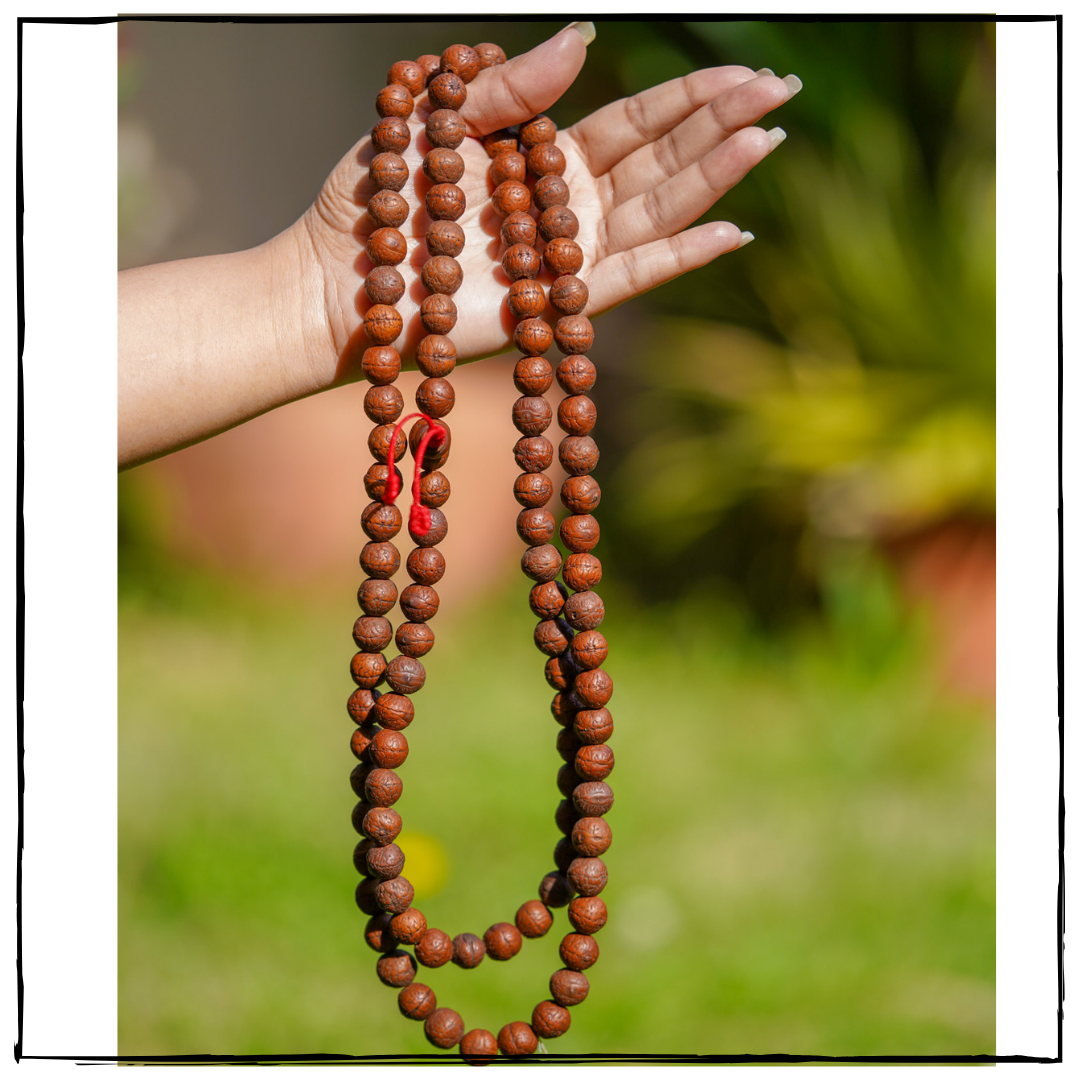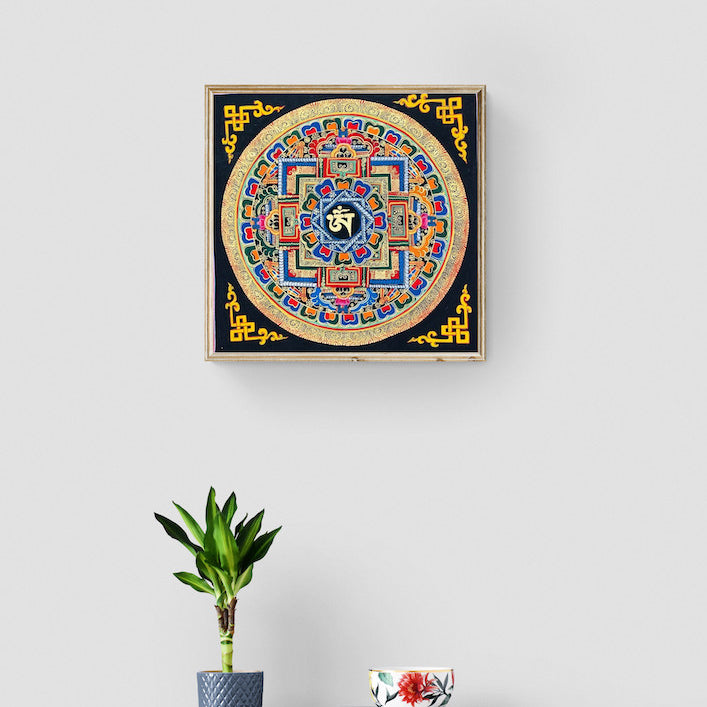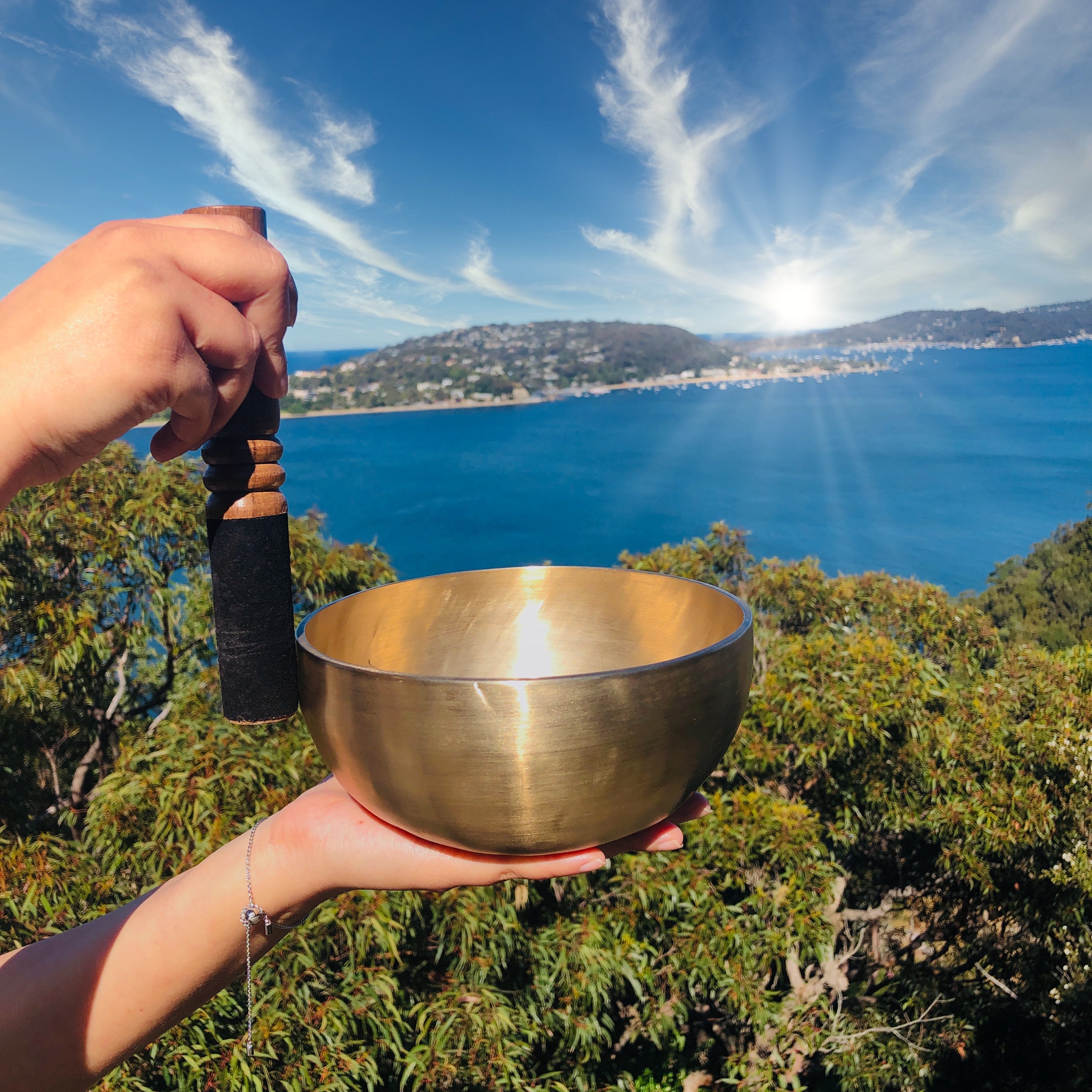21 Tara Thangka Painting
Couldn't load pickup availability
Description
21 Tara Thangka is a traditional Tibetan Buddhist artwork or scroll that depicts the 21 manifestations of Tara, a female bodhisattva recognized for her compassion and protection. Thangkas are sacred artifacts and meditation aids in Tibetan Buddhist rituals. Thangkas are often hand-painted with vivid colors and intricate details, representing a spiritual journey or ritual for the practitioner. They are unique works of art that provide insight into Tibetan Buddhism and appreciation of its cultural heritage.
The thangka's 21 Taras each represent a different attribute or facet of Tara. The thangka's focal point is the Green Tara, who is considered as Tara's prime form. Her seated stance, with one leg outstretched and the other folded, represents her desire to act fast to save sentient people. Each Tara has a distinct color and quality that may be noticed in their clothing, accessories, and hand gestures (mudras). The many hues represent a variety of attributes and energy, such as healing, compassion, knowledge, and protection. The thangka is designed to invoke Tara's power and presence in a colorful and captivating way. Each Tara’s distinctive features offer particular benefits, from protection and healing to knowledge and compassion.
Product Specification:
- Hand Painted
- Materials: Semi-Precious Natural Minerals
- Base: Cotton Canvas
- Origination: Nepal

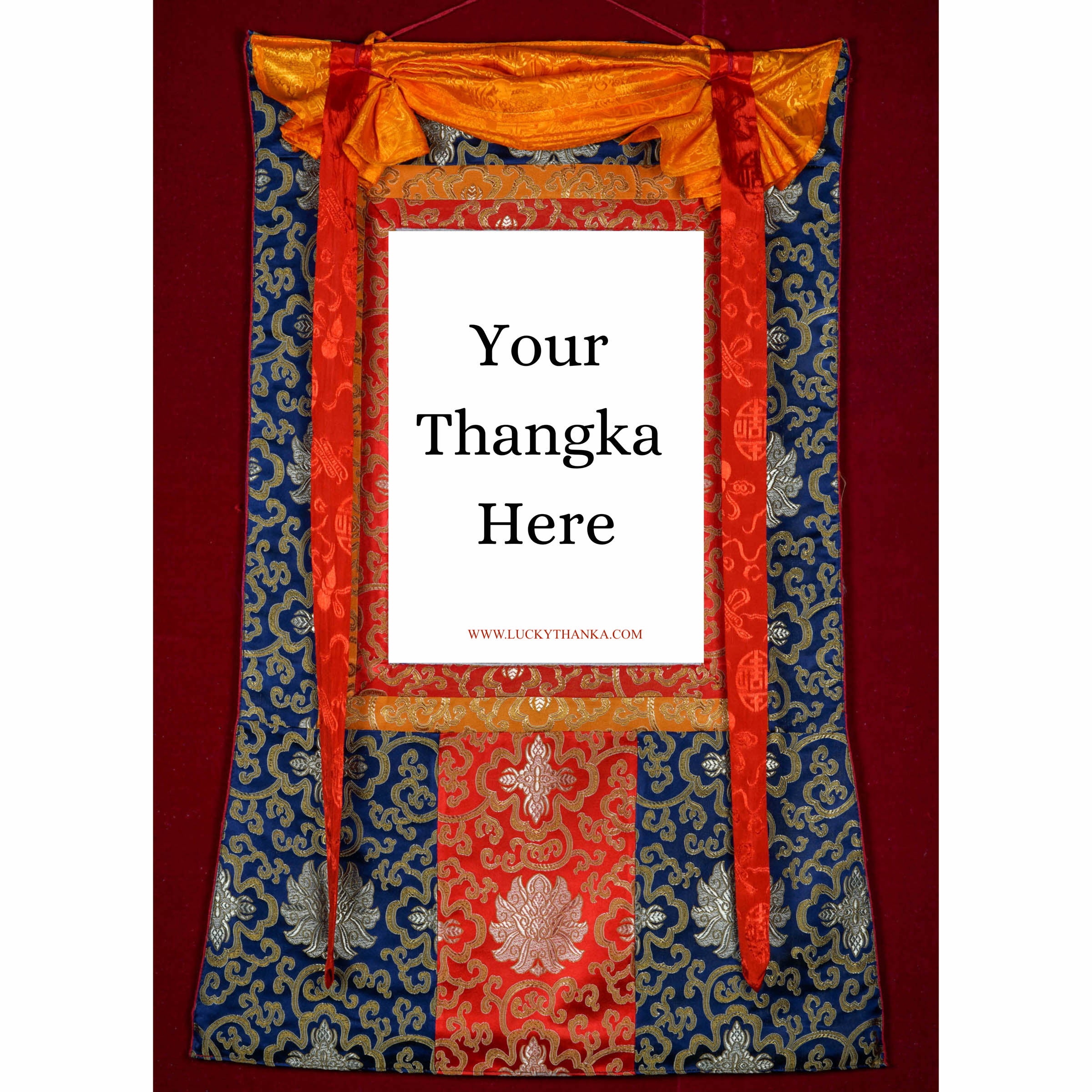
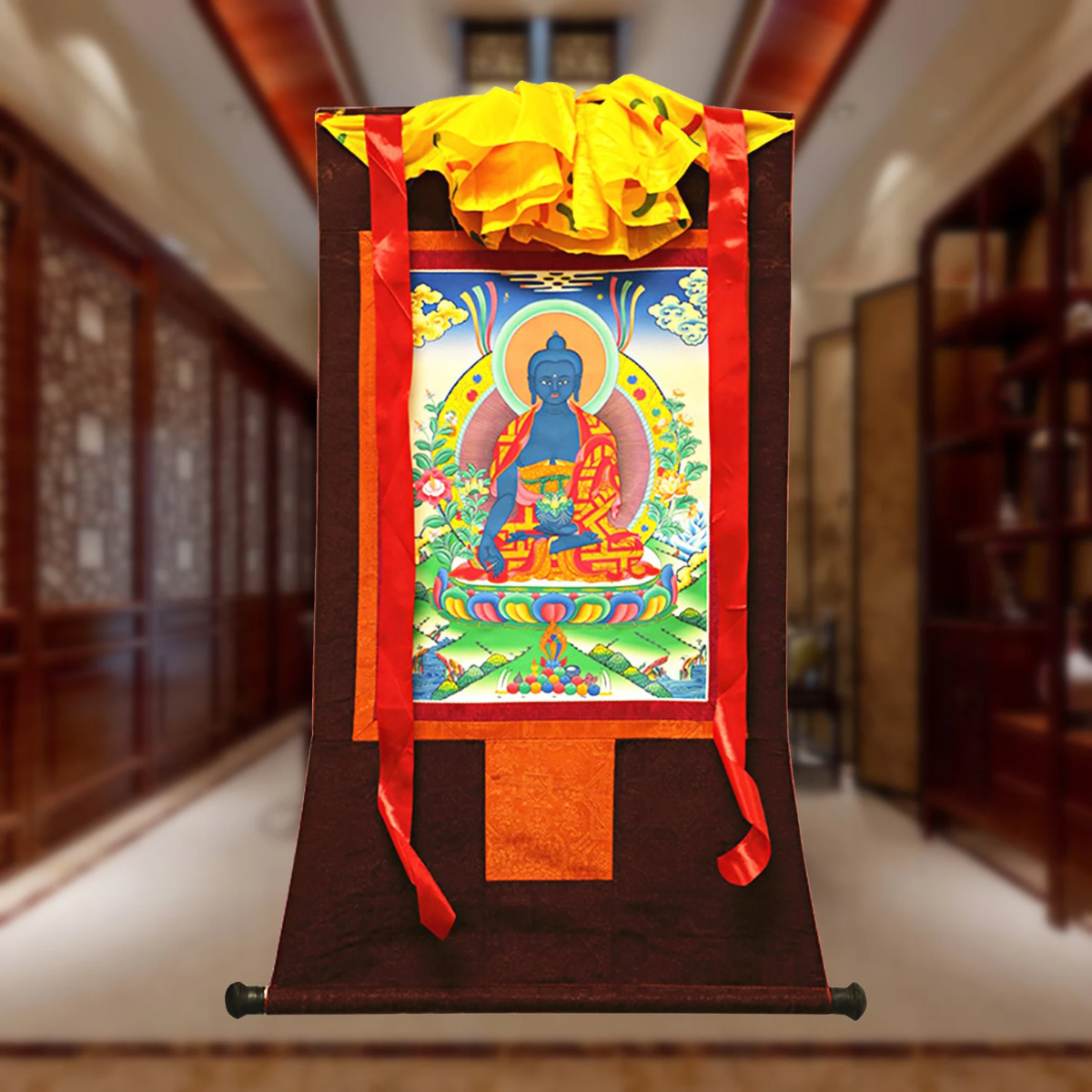
Hand Embroidery Brocade
Want to add a Brocade to your beautiful Thangka Painting? Traditional Style Brocade has been one of the most popular form of mounting as it has a greater religious merit.
Note: Make sure you have added the Thangka to your cart first.
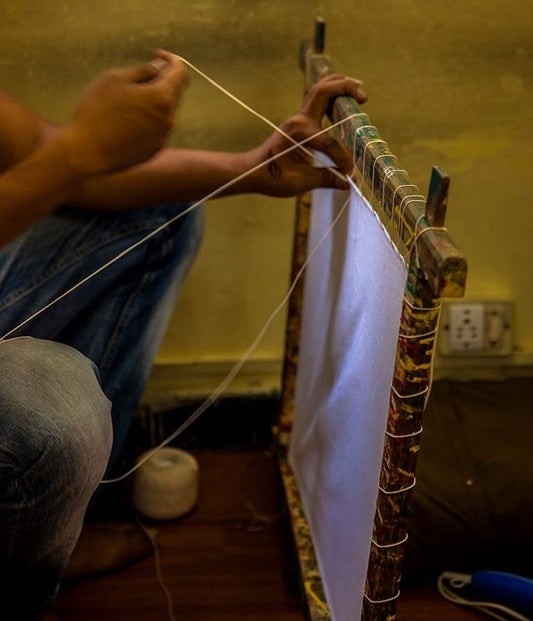
100% Cotton Canvas
Preparing the Cotton canvas before starting to paint a Thangka. This process includes washing, drying, stretching, sizing and everything needed to make a perfect base for the thangka to last for centuries.
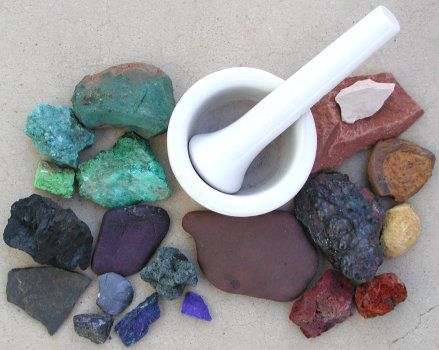
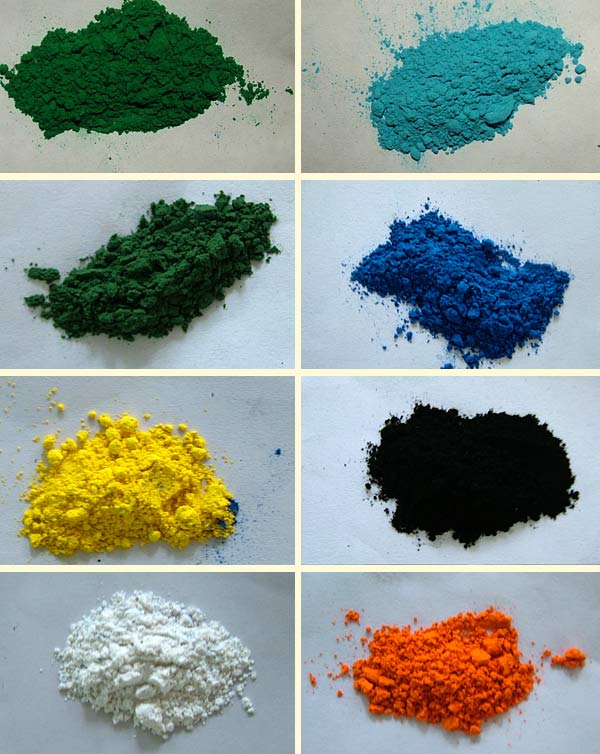
Natural Minerals
Thangka Paintings are painted using the natural minerals. These are firstly grind into the powder form and then used in the thangka as a paint.



